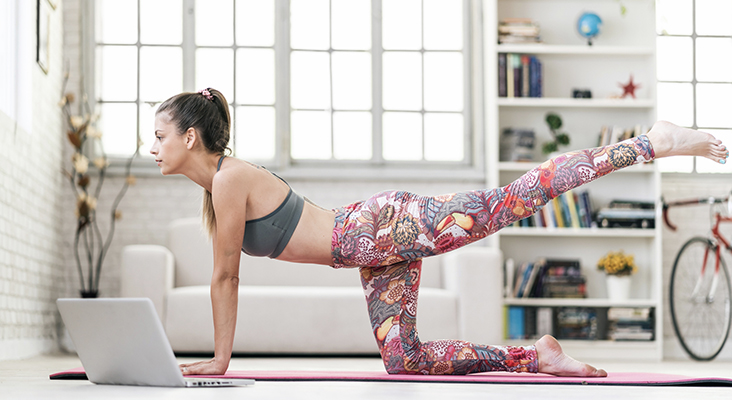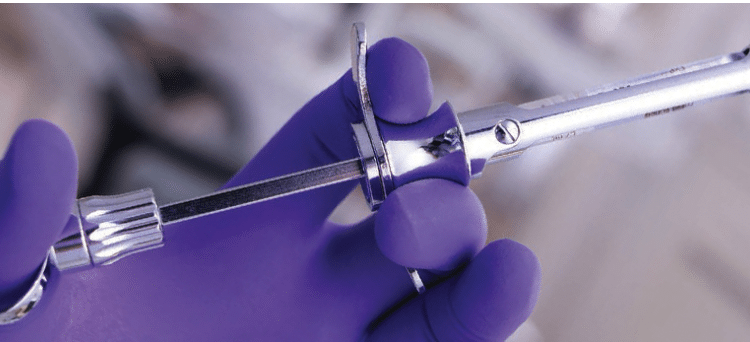Get Moving! Routines to Help Ease and Prevent Aches and Pains

For the past 17 years, Crystal Kanderis Lane, RDH, MSDH, a clinical dental hygienist and a member of Dimensions of Dental Hygiene’s Peer Review Panel, has practiced yoga to help relieve any aches and pains associated with practicing dental hygiene. She offers some simple exercises you can incorporate into your daily routine to help ease those aches and pains.
As a dental hygiene student, there are many new and exciting challenges that help you grow academically and professionally. You are also learning that dental hygiene is also physically demanding. The COVID-19 pandemic has brought about additional challenges; for example, distance learning has increased a student’s time in front of computers or other devices, creating more sedentary routines. Uncertainty surrounding the pandemic has also increased stress for students, which may lead to mental, emotional, and/or physical burnout. To prevent and ease physical stress like aches and pains, it is important to incorporate daily physical routines.
SET TIME ASIDE FOR MOVEMENT
Due to the rigorous nature of dental hygiene programs and the pandemic, it is not always possible to go to the gym or workout. However, daily physical routines do not have to be a traditional “workout” routine to be effective. There are many movements or physical activities you can do in between classes or patients, at night, or in the morning that can be very effective and counteract the physical effects of being a dental hygiene student. Free weekly yoga or stretching videos on YouTube make it easy to sneak in some stretching between classes.
Most students have some physical stress in the body that presents as aches and pains, ranging from acute and infrequent to chronic and constant. The location of the aches and pains may vary, including head, neck, shoulders, forearm, wrist, upper back, and lower back. The type of pain may be different as well. Tingling aches and pain can be the first warning that your body needs to move. Some of these sensations of pain and aches stem from a lack of blood flow to an area and can be quickly relieved by simple movements that increase blood flow to the affected area. Other aches and pains may be musculoskeletal.
To address several of these locations and types of aches and pains you may encounter, here are some routines you can try to incorporate into your day. Watch this video where I demonstrate several of these stretches.
— To immediately relieve a tingling sensation and increase blood flow to your upper body, stand up, place your arms straight out in front of you and pump your arms slowly from front to back; then rotating from your hips twist from side to side using your arms. This will increase blood flow to your upper body very quickly.
—If you have muscular aches and pain, sit in your operator or regular chair with your back straight, rotate from your hips, twist and hold the twist using the back of the chair on each side for at least 30 seconds to 60 seconds.
—To relieve head and neck pain, do slow head circles and hold on each side for 30 seconds to 60 seconds.
—To relieve lower back discomfort, while in your operator or regular chair, bring up one leg at a time resting the ankle of the stretching leg on top of the quad of the leg remaining on the floor for a “figure 4” stretch. Then keeping your spine straight, you can bend at the hips toward the leg. Switch legs and repeat.
—Use a wall to stretch out the front of your pectoralis region. Facing the wall, you can place the arm you want to stretch against the wall with the palm facing the wall; then gently turn your body away from the wall and the stretching arm.
— To stretch your wrists, clasp your hands together palms facing palms, and do wrist circles.
— A great engaging simple full-body activity is a 30-second to 60-second plank position.
— To relieve deeper muscular tension, place a tennis ball between the shoulder blades and a wall with firm pressure and roll the tennis ball from side to side.
— When all else fails, a quick brisk walk around the house, neighborhood, clinic, or classroom, provides some much needed full-body relief to increase blood flow to your muscles.
No matter what you choose, it is important to incorporate some physical activities into your daily routines and make them a part of your day. You can relieve physical stress in as little as 30 seconds to 60 seconds with simple stretching and gentle movements. So, what are you waiting for? Don’t just sit there, get moving!






Responses